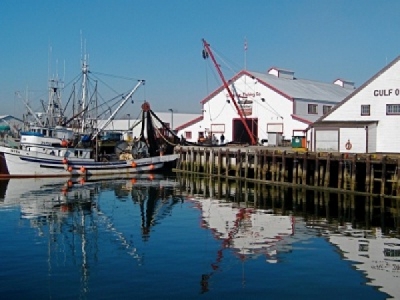
Posted on November 16, 2017
By Charles Stanley, MyWebTimes
After the U.S. Army Corps of Engineers acquires a new site in Ottawa for sand dredged from the Illinois River, the sand that gets deposited there will be free for the taking.
“Once we put sand there, it’s fair game for anyone who wants it,” Tom Davison, an engineer and project manager with the U.S. Army Corps of Engineers Rock Island District, said at a public hearing Monday evening.
The hearing at the Ottawa City Hall drew 31 people, nearly equally split between citizens and officials — eight from the corps and seven from the city, including Mayor Robert Eschbach and Commissioners Wayne Eichelkraut and Tom Ganiere.
Officials from the corps explained the need for a new site near Bulls Island to accommodate sand dredged to keep open the nine-foot navigational channel south of the island. The dredging would be performed by a crane with a clam-shell bucket mounted on a barge.
The current stockpile site is nearly full, so a replacement site is being lined up.
Corps officials explained the process, from location of a qualified site, to its acquisition through negotiated purchase or condemnation.
Davison said a preliminary report showing specific potential sites will be ready next spring or summer. When the land would be acquired and the dredging begin would be determined by operational needs.
The dredged sand, however, would be free for the taking, he said.
“It helps us because sand is really a commodity,” Davison said. “We have to get it out of the river and we have to put it somewhere. But if people can take it away, then we can keep using that site and we don’t need so much real estate. So it all balances out.”
In other places, dredged sand, which is checked for impurities, has been used for construction fill, as a concrete ingredient and for soil conditioning.
Davison noted there is one dredging deposit site near the Quad Cities where contractors take sand as fast as it’s placed there.
“So it always stays empty,” he said.
If the sand it not taken, it will be allowed to pile up 10 feet high.
Audience members suggested the sand be used to fill in other sites, including sand pits.
Cost is a factor there, Davison said.
“The key word in all this is balance,” he said. “You have to balance the taxpayer costs with the environmental concerns. We’ll work it all in and find the best solution.”
Davison said the audience input was valuable and appreciated — including the criticism that was voiced.
“The good, the bad, the ugly — it’s all good,” he told The Times afterward.
Source: MyWebTimes





